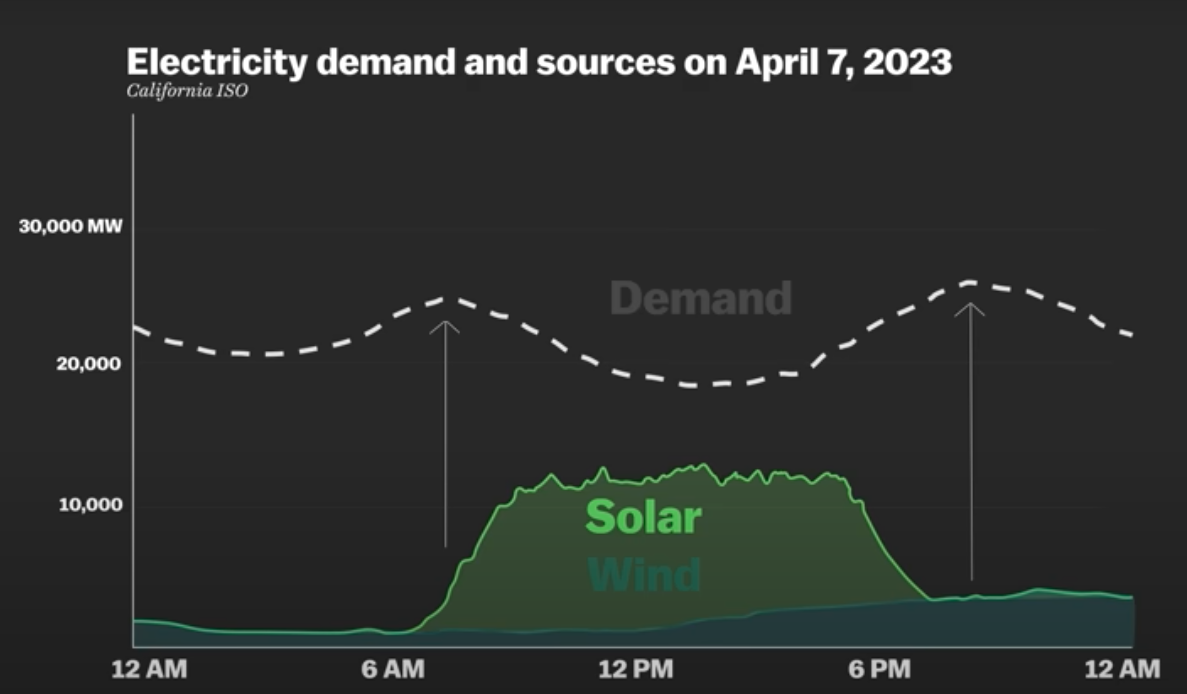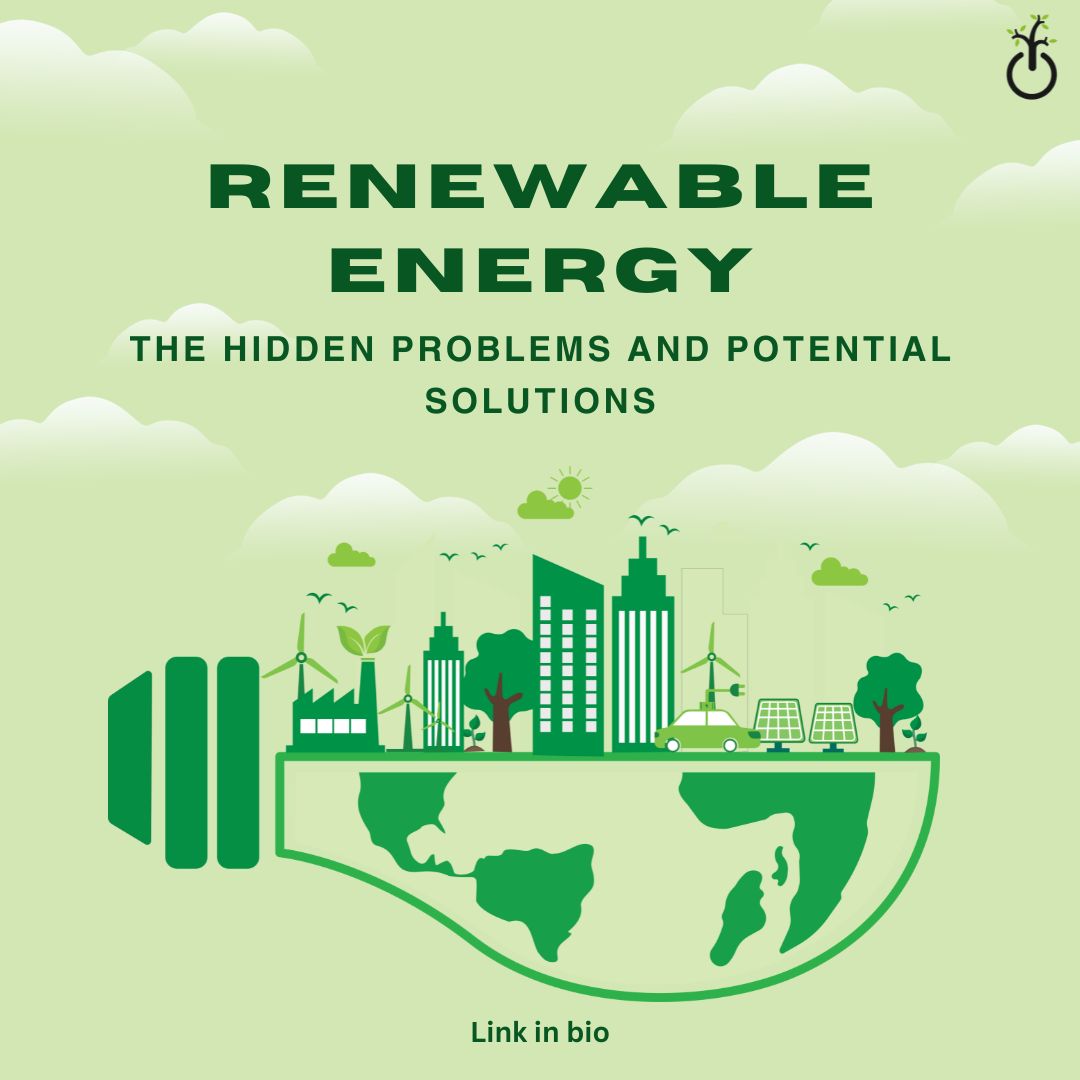The Problem:
Renewable energy is becoming a problem. What was once hailed as a silver bullet that would eliminate the burning of fossil fuels has its own interesting set of problems. Despite the obvious problem of spotty production: Wind turbines only function when the wind is blowing, solar panels only work when the sun is shining, and hydro only works when there is a sufficient level of water within the dam. A problem that is equally, if not more pressing, but rarely discussed is the overproduction of renewable energy.
The first problem with energy supply exceeding energy demand is that it causes energy prices to fall. Now, for the average consumer, this might seem like a non-problem; this, in fact, might seem like a panacea to the cost-of-living crisis many are grappling with. But the scope is bigger than just that of consumers. It encompasses all stakeholders – the most important of which would be investors. The same investors whose funds are the main driver of the green energy revolution.
This problem stems primarily from the overproduction of electricity by solar panels, a phenomenon known as solar value deflation. The steep decline in electricity prices, occasionally even dropping into negative territory, signals a bumpy future for clean energy. If developers are earning less, or even incurring losses, what incentive would they have to continue building?
Currently, that problem is being kept at bay by lucrative subsidies. As long as it gets cheaper (and stays cheap) to build solar farms, the incentive to build them remains. But that ‘trick’ won’t hold its guise forever. As more and more solar farms are built, the money to be made from generating renewable energy will steadily dissipate. The economics of solar farms – no matter how much they are subsidised – will eventually kill the renewable dream.
Supply exceeding demand also has potentially severe risks for the power grid at large. In peak times when supply by conventional producers and residential solar panels far outpaces demand, the components of the power grid become strained. Transformers may become overloaded when there’s significant reverse power flow, as they are primarily designed to distribute power to homes, not to absorb excess power generated by solar systems. This can lead to overheating or failure of these transformers. In residential areas with high amounts of solar panel installations, the reverse power flow could cause voltage instability – the grid is designed to handle some variation, but if it suffers under sustained overvoltage, it is bound to lead to the failure of some equipment.
What should be most glaring to us at Bocconi is to simply recognize the threat posed by progress. We live in unprecedented times, where the average consumer has evolved from Homo Sapiens to Homo Economicus, largely due to the mass availability of information at our fingertips. Solar panels now have a longer useful life, are more productive, are more reliable, and are cheaper than they were a decade ago. Rational consumers know this. This is leading to mass early adoption of these new-age panels, which in turn leads to large amounts of e-waste. It is 30 times cheaper to send a panel to a landfill than to recycle it. This phenomenon is cleverly dubbed solar trash, but it is not just solar panels that face the chopping block — wind turbines could also crowd landfills with an estimated 720,000 tons to enter over the next 20 years. And that is in the US only! Developing a strategy to enter the circular economy is crucial — and the sooner, the better.
A Sensible Solution
As mentioned earlier, most of the issues surrounding green energy stem from the inability we currently have of storing energy. If we were able to efficiently store energy during periods of high energy production, we could prevent energy prices from dropping by releasing this energy back into the grid during times of shortages. This in turn would result in the termination of our dependence on fossil fuels, which is currently used to stop the gap between supply and demand.. One of the greatest challenges renewable energy sources face would be in part solved.
In the past couple of years an innovative new technology has presented itself as a great alternative to traditional energy storage methods (pumped hydro storage (PHS) and lithium-ion batteries) and it heavily relies on one of the most fundamental principles of physics. This new technology is called gravity batteries and as the name suggests, the principle it leverages is gravitational potential energy.
Gravity batteries operate by lifting up heavy weights during periods where there are energy surpluses and releasing these weights during periods of energy shortage to pump energy back into the grid. During this process electrical energy is firstly transformed and stored in the form of gravitational potential energy (when the weights are lifted up), which is then transformed into kinetic energy (as the weights are dropped) and finally this kinetic energy is transformed back into electrical energy by a generator powered by the movement of the falling weights.

As mentioned earlier and presented in the graph above, renewable energy does not have a steady supply and the patterns of demand and supply do not match. Gravity batteries present an excellent method of overcoming the challenges that come with the unreliability of renewable energy sources. These “batteries” offer an efficient method of energy storage as up to 80 to 85 percent of energy can be effectively stored and the amount of energy lost in the process is therefore minimal as opposed to more conventional means of energy storage. Another considerable advantage is the low environmental impact of constructing plants for gravity batteries, as many abandoned mine shafts are repurposed and used for this method of energy storage. The weights used can also be made out of recycled materials, further decreasing the impact the construction of these plants may have.
It is not all good news though, as gravity batteries could potentially have a negative impact on the environment as well. If the plants used for this energy storage system are built above the ground, this could disrupt the habitat wildlife or interfere with human activity of communities that neighbour the plant. Another drawback is the massive amounts of concrete that would be used in the production of such plants, adding to the adverse effects energy batteries can have. But these drawbacks shouldn’t stop us from developing and implementing this new technology as its benefits far outweigh its drawbacks. In comparison to pumped hydro storage, gravity batteries don’t require nearly as much water, not to even mention the fact that PHS systems can only be built in terrains with very specific conditions.
Renewable energy, while essential, comes with challenges like irregular production that could possibly strain power grids. Falling energy prices and the mass generation of e-waste complicates the green energy transition. Gravity batteries offer a practical solution by efficiently storing excess energy with minimal impact on the environment. Though imperfect, they help tackle the variability of renewable energy production and help to stabilise the renewable energy market to help solidify an ever greener future.
By Gian Paolo Cecchini and Valerio Costa
Sources:
https://hbr.org/2021/06/the-dark-side-of-solar-power
https://electricalconnection.com.au/rapid-increase-solar-installations-potentially-overloading-grid/
https://www.enel.com/company/stories/articles/2024/03/gravity-storage
https://www.youtube.com/watch?v=z-k5uS7ALXk
https://www.bbc.com/future/article/20220511-can-gravity-batteries-solve-our-energy-storage-problems




